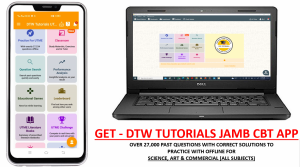10.0 INTRODUCTION
Ecology is the branch of biology that studies the interactions between living organisms and their environment, including interactions among organisms. It explores how organisms relate to one another and to non-living components like air, water, soil, and sunlight.
LEVELS OF ORGANIZATION IN ECOLOGY
- Individual: A single organism.
- Population: A group of individuals of the same species living in a specific area.
- Community: All the populations of different species that live and interact in a particular area.
- Climax Community: A stable and self-perpetuating community of plants and animals that has reached a state of equilibrium in a particular environment.
- Ecosystem: A community of living organisms and their physical environment, interacting as a system.
- Biome: A large geographic biotic unit, characterized by specific climate and vegetation types (e.g., desert, rainforest).
- Biosphere: The global sum of all ecosystems; the zone of life on Earth.
- Ecological niche: The specific functional role of a species within an ecosystem, including its habitat, resource use, and interactions with other organisms.
COMPONENTS OF ECOSYSTEM
- Biotic Factors: Living components of an ecosystem, including plants, animals, fungi, and microorganisms.
- Abiotic Factors: Nonliving components that influence the ecosystem, such as sunlight, temperature, water, soil, and nutrients.
10.1 INSTRUMENTS USED IN THE MEASUREMENT OF ECOLOGICAL FACTORS
- Rain gauge: Used for measuring the amount of rainfall.
- Thermometer; Used to measure temperature.
- Anemometer: Used for measuring the speed of wind.
- Wind vane: Used to indicate the direction of the wind.
- Hygrometer: Used to measure the relative humidity.
- Barometer: For pressure measurement.
- Photometer or Light metre: Used to measure light intensity on land.
- Hydro Photometer: Used to measure light intensity in water.
- Secchi Disc – Used for measuring the turbidity or transparency of water.
- Hydrometer: Used for measuring relative density.
10.2 LOCAL BIOMES IN NIGERIA
- Tropical Rainforest
- Location: Found in the southern part of Nigeria, particularly in states like Cross River, Akwa Ibom, and Rivers.
- Climate: High humidity and rainfall (over 2000 mm annually) with temperatures averaging 25-30°C.
- Vegetation: Dense, multi-layered forests with tall trees (up to 60 metres), lianas, and epiphytes.
- Common trees include mahogany, ebony, and rubber trees.
- Savanna
- Location: Predominantly in the northern and central regions of Nigeria, including states like Kaduna, Kano, and Niger.
- Climate: Characterized by a distinct wet and dry season, with annual rainfall ranging from 500 to 1500 mm and temperatures averaging 20-30°C.
- Vegetation: Grasslands with scattered trees and shrubs.
- Common trees include acacia and baobab.
- Mangrove Forests
- Location: Found along the coastal regions of Nigeria, particularly in the Niger Delta area.
- Climate: High humidity and rainfall, with tidal influences from the ocean.
- Vegetation: Dominated by salt-tolerant trees such as Rhizophora (red mangrove) and Avicennia (black mangrove).
- Montane Biome
- Location: Found in the highland areas of Nigeria, particularly in the Jos Plateau and the Mambilla Plateau.
- Climate: Cooler temperatures (15-25°C) with higher rainfall compared to surrounding areas.
- Vegetation: Characterized by grasslands, shrubs, and scattered trees, including montane forests at higher elevations.
- Desert Biome
- Location: Found in the northeastern part of Nigeria, particularly in states like Borno and Yobe.
- Climate: Extremely low rainfall (less than 250 mm annually) with high temperatures during the day and cooler nights.
- Vegetation: Sparse vegetation including drought-resistant plants such as cacti and acacia trees.
10.3 ENERGY FLOW IN ECOSYSTEMS
- Producers (Autotrophs): Organisms that produce their own food through photosynthesis (e.g., plants, algae).
- Consumers (Heterotrophs): Organisms that obtain energy by consuming other organisms:
- Primary Consumers: Herbivores that feed on producers. e.g grasshopper.
- Secondary Consumers: Carnivores that feed on primary consumers.
- Tertiary Consumers: Omnivores that feed on both plants and animals e.g., man.
- Decomposers: Organisms (e.g., bacteria, fungi) that break down dead organic matter, recycling nutrients back into the ecosystem.
10.4 ECOLOGICAL RELATIONSHIPS
Ecological relationships refer to the interactions between organisms in an ecosystem, which influence their survival, behavior, and growth. These relationships are crucial for maintaining the balance of ecosystems.
TYPES OF ECOLOGICAL RELATIONSHIP
- Predation: One organism (predator) feeds on another (prey).
- Competition: Organisms compete for limited resources (e.g., food, space).
- Mutualism/Symbiosis: A symbiotic relationship where both organisms benefit (e.g., bees and flowers).
- Commensalism: One organism benefit while the other is neither helped nor harmed (e.g., barnacles on whales).
- Parasitism: One organism (the parasite) benefits at the expense of another (the host).
10.5 NUTRIENT CYCLE
- Water Cycle: The continuous movement of water through evaporation, condensation, precipitation, and infiltration.
- Carbon Cycle: The movement of carbon among the atmosphere, oceans, soil, and living organisms through processes like photosynthesis and respiration.
- Nitrogen Cycle: The conversion of nitrogen from the atmosphere into forms usable by living organisms through processes like nitrogen fixation and denitrification.
FOOD CHAIN – A Food chain is a linear sequence of organisms which starts from producer organisms and ends with decomposer species, passing nutrient and energy. A simple food chain might look like this:
Producers (e.g., grass) → Primary Consumers (e.g., rabbits) → Secondary Consumers (e.g., foxes).
ENERGY TRANSFER – Energy is transferred through consumption, but only a fraction is passed on to the next level due to energy loss (e.g., respiration, heat).
FOOD WEBS – Food webs illustrate the interconnectedness of multiple food chains, showing how various organisms are linked through feeding relationships.
TROPHIC LEVELS
- Producers (1st level); Organisms that produce their own food (e.g., plants).
- Primary Consumers (2nd level): Herbivores that eat producers (e.g., insects, rabbits).
- Secondary Consumers (3rd level): Carnivores that eat primary consumers (e.g., snakes).
- Tertiary Consumers (4th level): Top predators (e.g., eagles).
10.6 SOIL AND ITS TYPES
Soil is the upper layer of Earth’s surface, a mixture of organic matter, minerals, gases, liquids, and organisms that supports plant and soil organism life.
TYPES OF SOIL
- Sandy Soil – Characteristics of sandy soils
- Composed of large particles, which makes it gritty and coarse.
- Drains quickly and has low water retention. iii) Warms up quickly in spring.
- Advantages of sandy soil
- Easy to cultivate and work with.
- Good for root crops like carrots and potatoes.
- Disadvantages of sandy soil
- Nutrient-poor and requires frequent fertilisation.
- Prone to erosion due to low cohesion.
- Clayey Soil – Characteristics clayey soil
- Composed of very fine particles that are tightly packed.
- Retains water well but drains poorly, leading to waterlogging.
- Heavy and sticky when wet, hard and cracked when dry.
Advantages of clayey soil
- Rich in nutrients and minerals.
- Good for growing crops that require moisture.
- Disadvantages of clayey soil
- Difficult to work with when wet or dry.
- Can lead to poor aeration and root growth.
- Loamy Soil – Characteristics of loamy soil
- A balanced mixture of sand, silt, and clay.
- Retains moisture while allowing for good drainage and aeration.
- Often considered the ideal soil for gardening and agriculture.
- Advantages of loamy soil
- High fertility and nutrient content.
- Supports a wide variety of plants and crops.
- Disadvantages of loamy soil
- Can be more expensive to maintain if amendments are needed.
10.6 ECOLOGICAL SUCCESSION AND ITS TYPES
Ecological succession is defined as the orderly series of changes occurring in plant communities over a given period until a stable or Climax Community is reached.
TYPES OF ECOLOGICAL SUCCESSION
- Primary Succession: Occurs in lifeless areas where soil has not yet formed (e.g., ponds, vegetation on rocks).
- Secondary Succession: Occurs in areas where a disturbance has destroyed an existing community but left the soil intact (e.g., abandoned grasslands and farmlands).
DTW Tutorials Study Resource Links;
First of All to obtain high JAMB &WAEC Scores, YOU HAVE TO Practice! Practice!! Practice!!
Use DTW JAMB & WAEC 2025 CBT Practice App!!!
– GET DTW TUTORIALS JAMB & WAEC 2025 CBT EXAM PRACTICE APP for all Subjects with over 31,000 Past Questions and Correct Solutions to Practice with offline! (Activation cost is N4000 for 1 year) Download Links Below for Mobile Phones & Laptop Computer;
DTW TUTORIALS JAMB 2025 APP For MOBILE Phone Direct Download link;
https://play.google.com/store/apps/details?id=com.iafsawii.dtw.jamb
DTW TUTORIALS JAMB 2025 APP For DESKTOP Laptop Computer Direct Download link; https://drive.google.com/file/d/1iIHBoWjEeJeCFyTO9nt-9kAveH2FqjrT/view?usp=sharing
Download Links for WAEC 2025 App;

JAMB RESOURCE LINKS BELOW;
– JAMB Past Questions Solved Playlists on Math, Phy, Chem; https://www.youtube.com/playlist?list=PLLgYU6fS5143-p4dfWIFL7keuB1SBgT2b
– THE LEKKI HEADMASTER – Summary, Questions And Answers (JAMB 2025 NOVEL); https://dtwtutorials.com/the-lekki-headmaster-jamb-2025-novel-summary-questions-and-answers-pdf-download/
– JAMB 2025 Recommended Text Books – https://dtwtutorials.com/jamb-2025-recommended-text-books-for-all-subjects/
– JAMB 2025 Syllabus all Subjects – https://dtwtutorials.com/jamb-2025-syllabus-free-download/
– JAMB 2025 Syllabus in 30 Days Timetable Challenge by DTW Tutorials for Science, Art & Commercial Subject Combinations – Cover Your JAMB Syllabus in 30 Days Challenge; https://dtwtutorials.com/jamb-2025-syllabus-in-30-days-timetable-challenge-by-dtw-tutorials-cover-your-jamb-syllabus-in-30-days-challenge/
– How to Manage Your Jamb Exam Time for High Scores; https://youtu.be/Tp4Va8haib8
– Physics Notes and Questions on All topics; https://dtwtutorials.com/category/tutorials/physics-tutorials/
– Chemistry Notes and Questions on All topics; https://dtwtutorials.com/category/tutorials/chemistry/
– How to Read, Understand and Remember Always- https://youtu.be/kL8BpRePudA
– How to Cover Your JAMB Syllabus Fast in 30 Days!!; https://youtu.be/RVgyn01Ptd0
– What to do a night before your Jamb Exam (+Exam Prayers); https://youtu.be/njbAx4Oz5Rw
– How to Manage Your Jamb Exam Time for High Scores; https://youtu.be/Tp4Va8haib8
– Overcoming Exam Fear/Anxiety– https://youtu.be/Uvf81rvd0ls
You can also join our online groups below for instant JAMB 2025 Updates;
Join DTW JAMB 2025 Intensive Tutorials Study Groups on Facebook, Telegram and WhatsApp Group;
Facebook Group – https://web.facebook.com/groups/dtwtutorialsgroup/
WhatsApp Group – https://chat.whatsapp.com/E8pprCQYtahKfpQN9UB0aU
Telegram Group – https://t.me/+AcXfhJPSIiI2ZTY0
WhatsApp Channel – https://whatsapp.com/channel/0029VaAWvTmDDmFT9o25dV3u
DTW JAMB 2025 Intensive Online Lessons/Tutorials
Online JAMB 2025 Tutorials – Your Path to Jamb Success!
Are you preparing for the JAMB 2025 Exam and aiming for excellence? Look no further than Online Jamb Tutorial by DTW Consult. We’re dedicated to helping you ace your Jamb with confidence.
- Why Choose DTW Online JAMB Intensive Tutorials?
• Engaging, Clear and Interactive Online Lectures
• Completion of JAMB Syllabus
• Weekly Quiz Assessments
• Continuous Brainstorming and Competitions
• Membership in an Active Learning Community
• Consistent Solving of JAMB Past Questions-
• Expert Jamb Instructors
• Comprehensive Study Materials - All Classes are Recorded!! In case you miss any class, and when you join us you will have access to all the previous class recorded videos!!!
• Subjects;
English
Physics
Chemistry
Biology
Math
Economics
Literature
Crs
Government
• Affordable Tuition – N7000 monthly (6pm – 10pm, Mon to Fri)
Lectures Ongoing! Register Now!!
Bank Details:
Account Name: DTW Consult
Account Number: 6414330770
Bank: Moniepoint
Amount – N7000
For easy payment and enrollment.
Proof of payment should be sent by WhatsApp.
Contact Us:
WhatsApp: 09085099582, 08038732879
Email: dtwconsultng@gmail.com
Take a step closer to your Jamb success with DTW Online Jamb 2025 Intensive Tutorials.
Let’s work together to unlock your full potential!

https://youtu.be/P7wtBH46ZMMnsive Tutorials. Let’s work together to unlock your full potential! #JambPrep #OnlineTutorial #DTWConsult #JambSuccess #jamb2025 #utme2025

No Comments